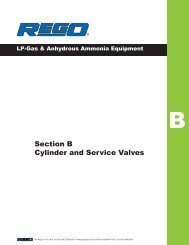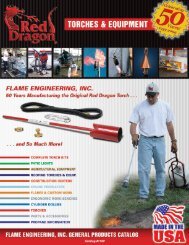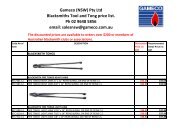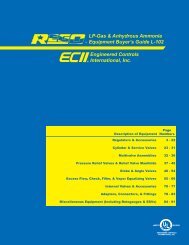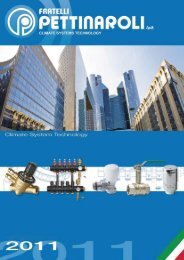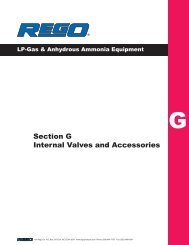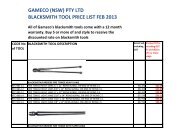Create successful ePaper yourself
Turn your PDF publications into a flip-book with our unique Google optimized e-Paper software.
26<br />
LP-<strong>Gas</strong> Regulators<br />
The regulator truly is the heart of an LP-<strong>Gas</strong> installation. It must<br />
compensate for variations in tank pressure from as low as 8 psig<br />
to 220 psig – and still deliver a steady flow of LP-<strong>Gas</strong> at 11” w.c.<br />
to consuming appliances. The regulator must deliver this pressure<br />
despite a variable load from intermittent use of the appliances.<br />
The use of a two-stage system offers the ultimate in pin-point<br />
regulation. Two-stage regulation can result in a more profitable<br />
LP-<strong>Gas</strong> operation for the dealer resulting from less maintenance<br />
and fewer installation call-backs.<br />
Single Stage/Twin-Stage Regulation<br />
NFPA 58 (1998) states that single stage regulators shall not be<br />
installed in fixed piping systems. This requirement includes<br />
systems for appliances on RVs, motor homes, manufactured<br />
housing, and food service vehicles. In these cases a twin-stage<br />
regulator must be used. The requirements do not apply to small<br />
outdoor cooking appliances, such as gas grills, provided the input<br />
rating is 100,000 BTU/hr or less.<br />
Two Stage Regulation<br />
Two-Stage regulation has these advantages:<br />
Uniform Appliance Pressures<br />
The installation of a two-stage system–one high pressure regulator<br />
at the container to compensate for varied inlet pressures, and one<br />
low pressure regulator at the building to supply a constant delivery<br />
pressure to the appliances–helps ensure maximum efficiency<br />
and trouble-free operation year round. Two-stage systems keep<br />
pressure variations within 1” w.c. at the appliances.<br />
Reduced Freeze-ups/Service Calls<br />
Regulator freeze-up occurs when moisture in the gas condenses<br />
and freezes on cold surfaces of the regulator nozzle. The nozzle<br />
becomes chilled when high pressure gas expands across it into the<br />
regulator body.<br />
Two-stage systems can greatly reduce the possibility of freezeups<br />
and resulting service calls as the expansion of gas from tank<br />
pressure to 11” w.c. is divided into two steps, with less chilling<br />
effect at each regulator. In addition, after the gas exits the<br />
first-stage regulator and enters the first-stage transmission line, it



